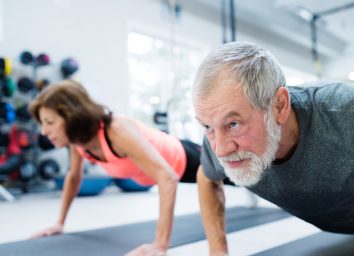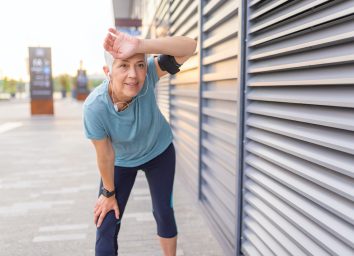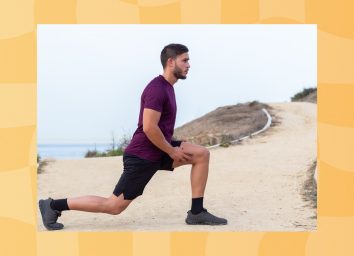Over 60? This 10-Minute Stretching Workout Does Wonders for Your Body
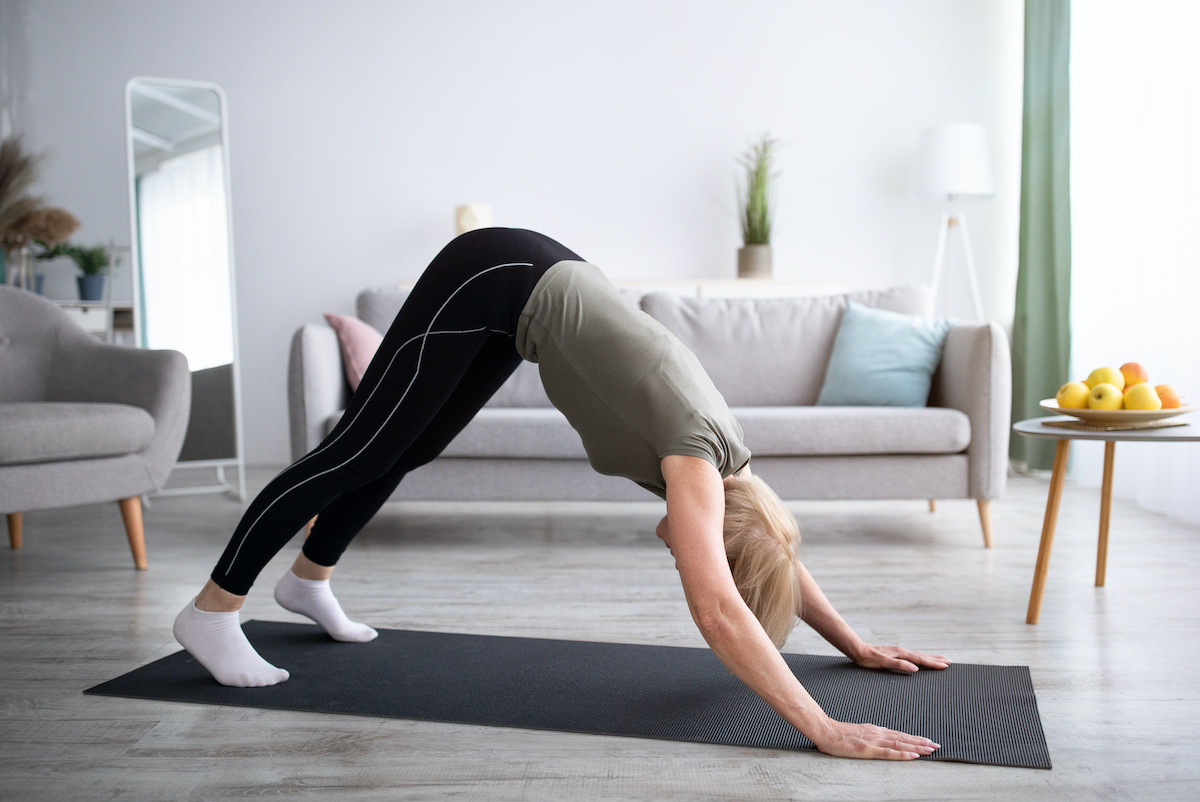
Even some of the most passionate gym rats I know think stretching is something that's both annoying and avoidable. They're wrong. At any age, stretching improves your blood flow, reduces your risk of injury, increases your range of motion, helps you achieve better balance, assists your body in relieving itself of inflammatory lactic acids (which create soreness and stiffness), and ultimately helps you get lean. What's more, a recent study published in the Journal of Physical Activity and Health found that stretching is terrific at lowering your blood pressure.
A dedicated stretching regimen also helps improve your posture, reduces aches and pains, and even provides a nice energy boost. There's a reason that the folks at The Mayo Clinic and the American Council on Exercise tell us that stretching improves blood flow and oxygen circulation throughout the body and brain, and the leading experts at the American Heart Association recommend stretching first thing in the morning after getting out of bed.
Take it from me: Stretching is even more important as you age. When you reach your 50s, 60s, and beyond, it's practically a certainty that your posture and your flexibility won't be what they were when you were in your 20s and 30s. If you've worked a desk job, you've been sitting with your head flexed down—and your shoulders rolled forward—for literally decades. These habits compound over time. I see poor posture, poor mobility, abbreviated range of motion, and subpar flexibility among my over-60 clients here in Los Angeles all the time.
I encourage them—and I encourage you, if you're over 60—to incorporate some dedicated stretching workouts into your life. As we've reported recently at ETNT Mind+Body, if you have a daily stretching habit, you'll bolster your balance, improve your circulation, and vastly improve your mobility and quality of life.
If you're game, keep reading, because I've provided here an amazing stretching workout that you can do at home in just 10 minutes. Why this routine? Well, it targets the most commonly tight areas of your body—your calves, your hips, your hamstrings, your upper back, and your chest. You'll feel better, move better, and you'll find that you're not only energized afterward but also a more active person overall.
Don't believe me? Give it a go. And if you do, remember one thing: With each of these movements, you want to ease your way into the stretch and not force the range of motion. Take it slow, and relax. Always focus on breathing through your nose, and exhaling as you increase the stretch. I'd advise you to perform 2 sets of the following exercises back to back. And for more great exercise advice, don't miss the Secret Side Effects of Lifting Weights for the First Time, Says Science.
Brettzel Stretch (5 breaths each side)
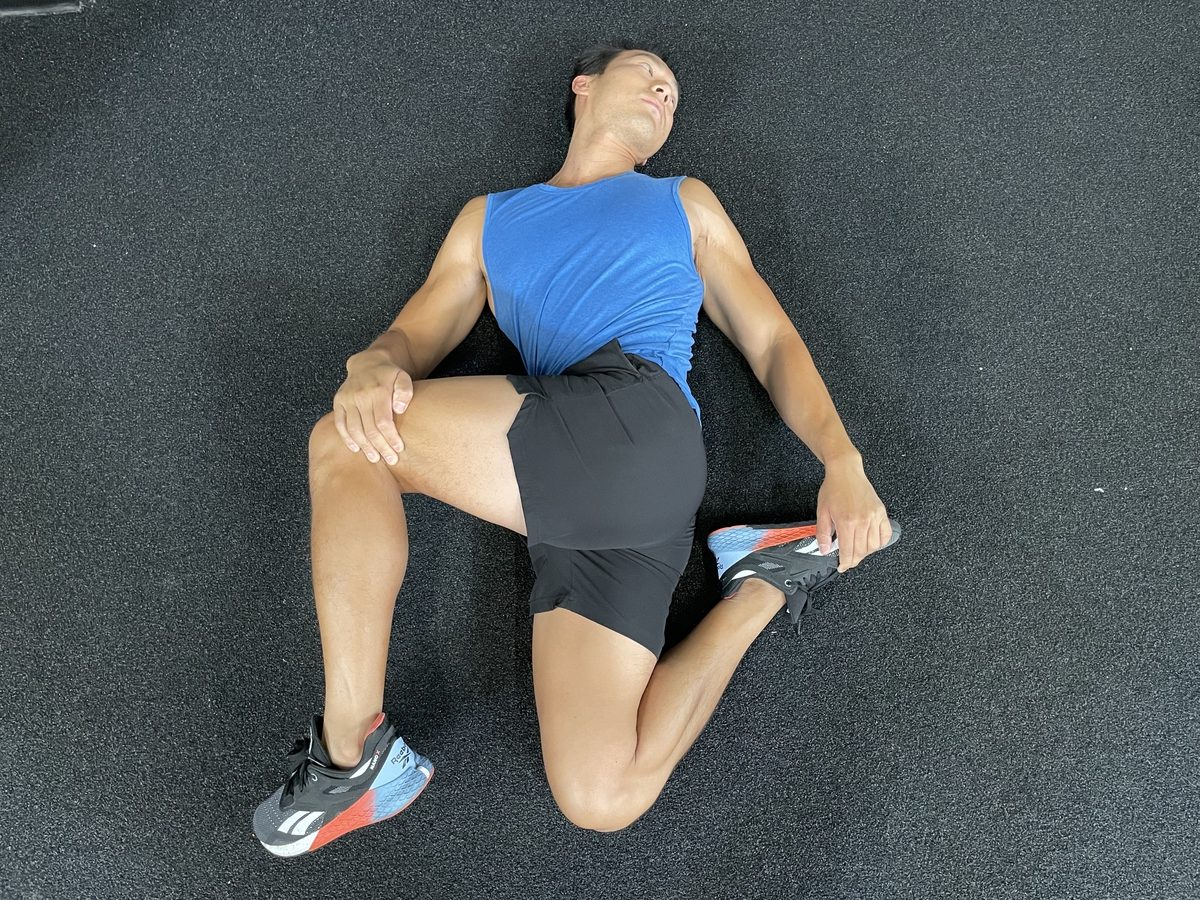
Lay on one side of your body with your top knee pulled up towards your belly button with the bottom hand and your quad pulled back with the top hand. Turn your head away from the body and drop your shoulder towards the ground.
Inhale through the nose while filling your belly full of air. As you exhale, drop your shoulder and increase the range of motion. Repeat a few more times until your shoulder touches the ground or until you're stuck at the current range of motion. And for more great exercises you can do, see these 5-Minute Exercises for a Flatter Stomach Fast.
Alternating Pigeon Stretch (5 reps each side)
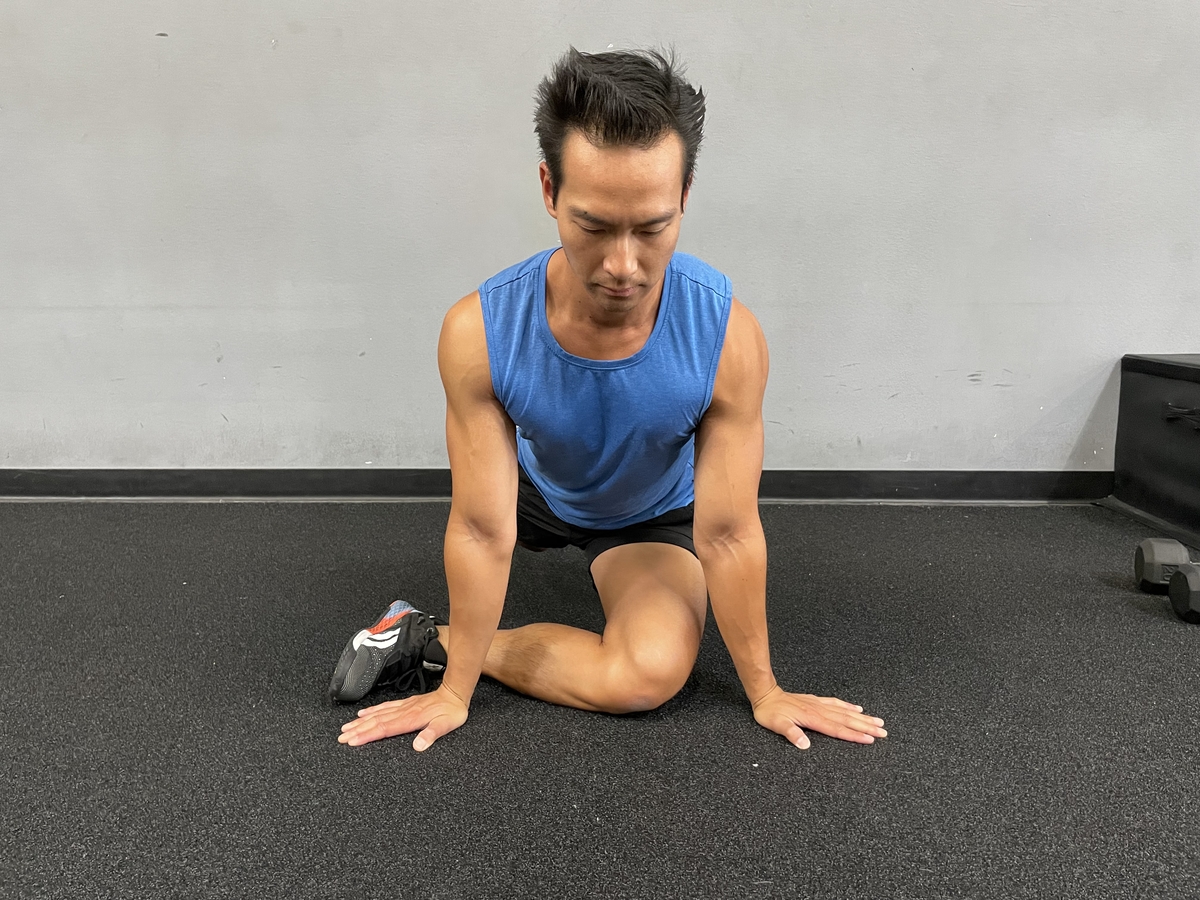
Get down on the floor, and start by rolling your left leg underneath you, and straightening your right leg back. Feel a nice stretch in your glute and hip, hold the position for a bit as the muscle releases, then switch to your other leg and repeat.
3-Way Hamstring Stretch (15-20 seconds each phase)
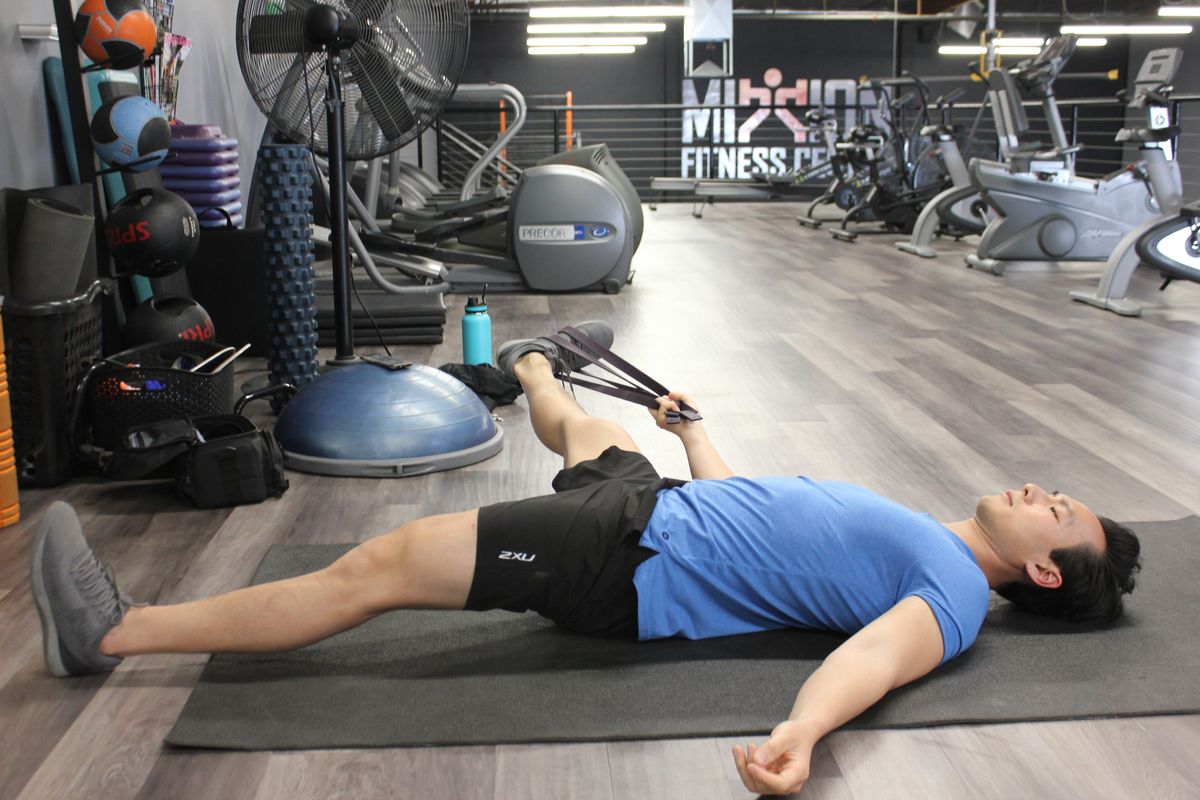
Laying flat on your back, grab a strap or resistance band and wrap it around one foot. Keeping your core tight and leg straight, pull your foot back towards you, getting a nice hamstring stretch at your comfortable range of motion.
Hold the position for a few seconds, then bring your leg across the body, loosening up any tension in the hamstring area. Maintain the stretch for a few seconds, then bring it outside of your body, opening up your adductors and hamstrings. Feel the muscles relax, then switch legs and repeat.
Downward Dog Calf Stretch (5 reps each side)
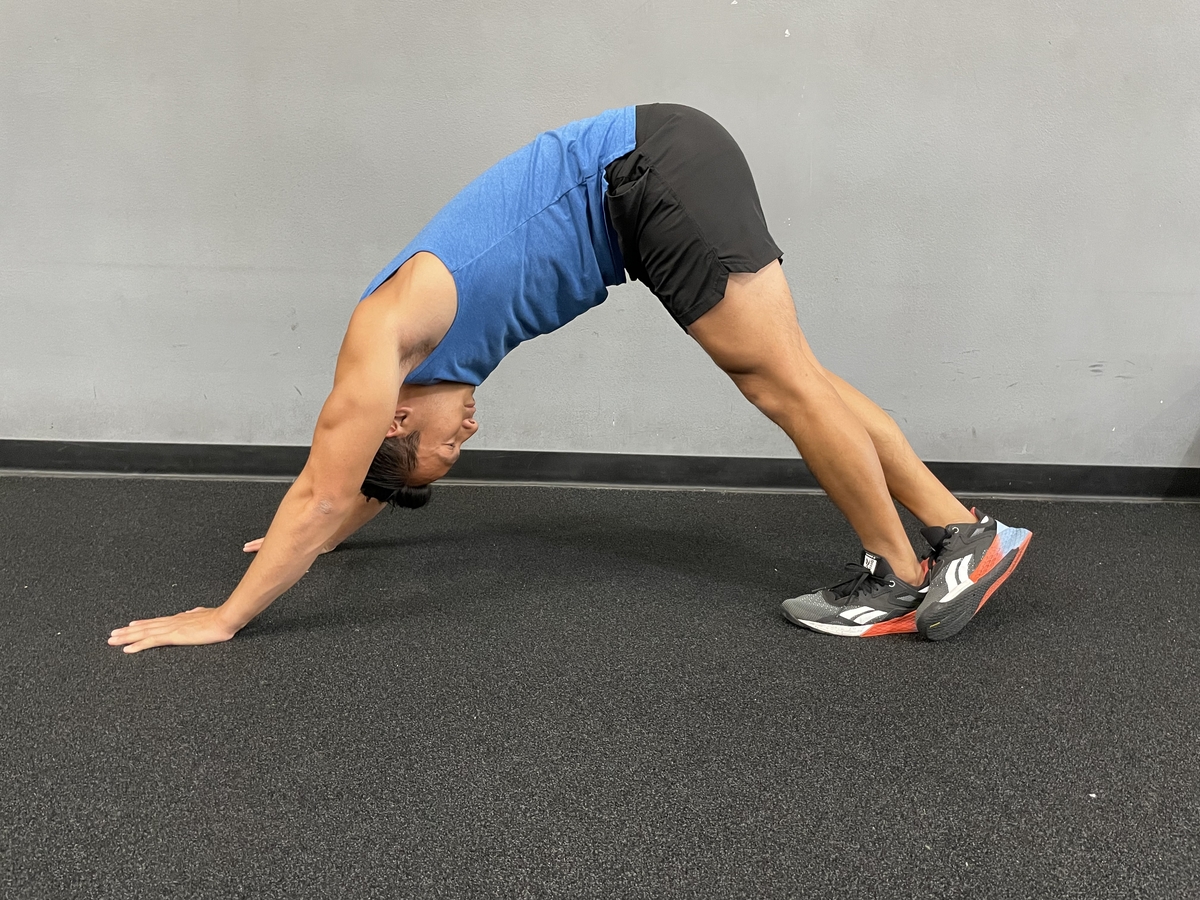
Position yourself in the downward dog pose with one foot crossed over the other. Drop the heel to stretch your calf, perform a calf raise, and drop your heel again to increase the range of motion. Once you've got your heel to the ground, switch legs.
Pec Stretch (20-30 seconds each side)
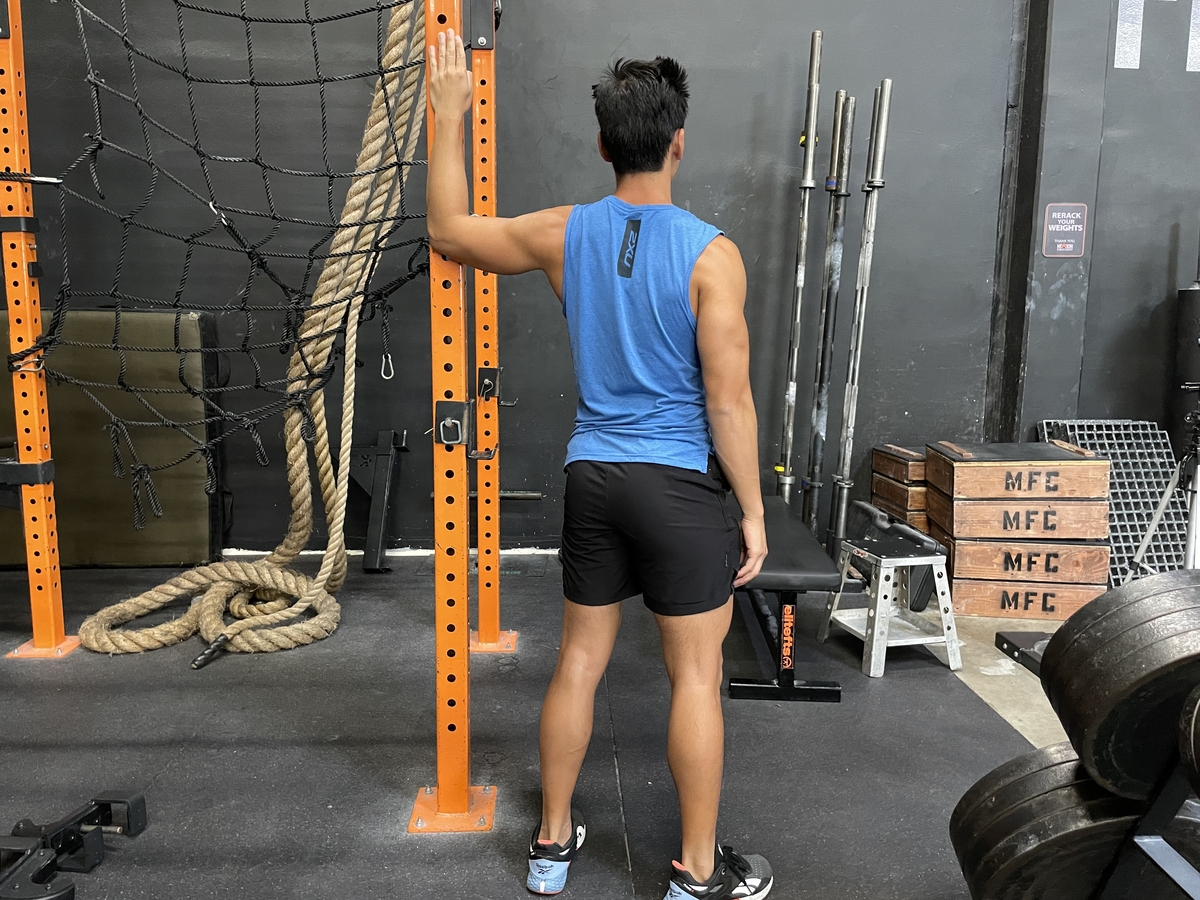
Position arm and elbow at 90 degrees against a doorway or stable beam. Keeping your core tight and shoulder blade pulled back, turn your body away. You should feel a nice chest stretch (not your front shoulder). Hold the position, then slowly increase the range of motion as the pec relaxes.
Once you've held the stretch for the prescribed time, switch sides. And for some exercises to avoid, don't miss this list of The Worst Exercises You Can Do After 60.

